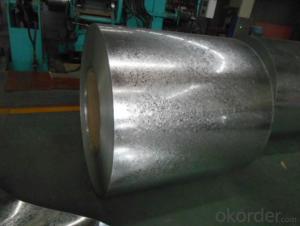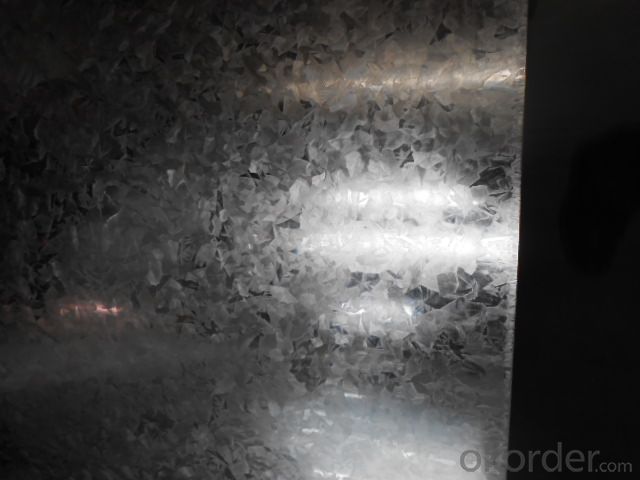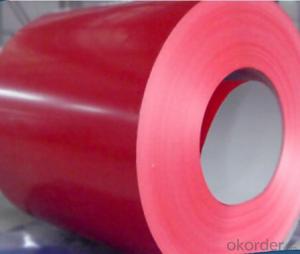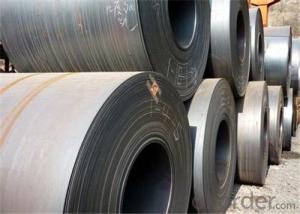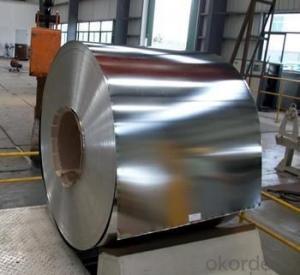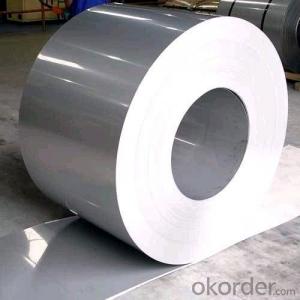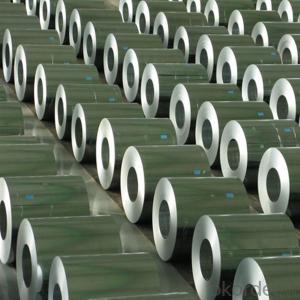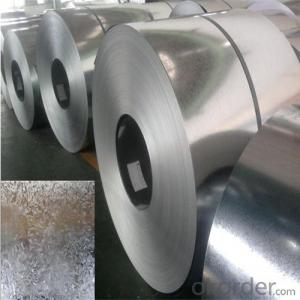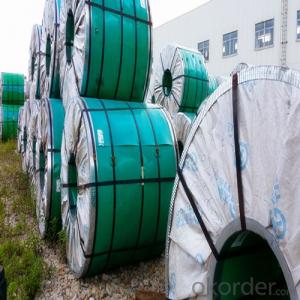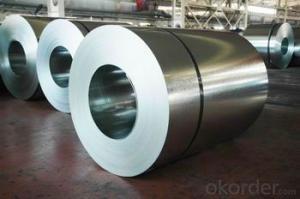Hot-dip Zinc Coating Steel Sheets in Coils of Prime Quality and Best Price
- Loading Port:
- Shanghai
- Payment Terms:
- TT OR LC
- Min Order Qty:
- 50 m.t.
- Supply Capability:
- 10000 m.t./month
OKorder Service Pledge
OKorder Financial Service
You Might Also Like
1.Structure of Hot-Dip Galvanized Steel Sheet Description:
Hot-dip galvanized steel coils are available with a pure zinc coating through the hot-dip galvanizing process. It offers the economy, strength and formability of steel combined with the corrosion resistance of zinc. The hot-dip process is the process by which steel gets coated in layers of zinc to protect against rust. It is especially useful for countless outdoor and industrial applications. Production of cold formed corrugated sheets and profiles for roofing, cladding, decking, tiles, sandwich walls, rainwater protective systems, air conditioning duct as well as electrical appliances and engineering.
2.Main Features of the Hot-Dip Galvanized Steel Sheet:
• Excellent process capability
• Smooth and flat surface
• Workability, durability
• Excellent anticorrosive property
• High strength
• Good formability
• Good visual effect
3.Hot-Dip Galvanized Steel Sheet Images
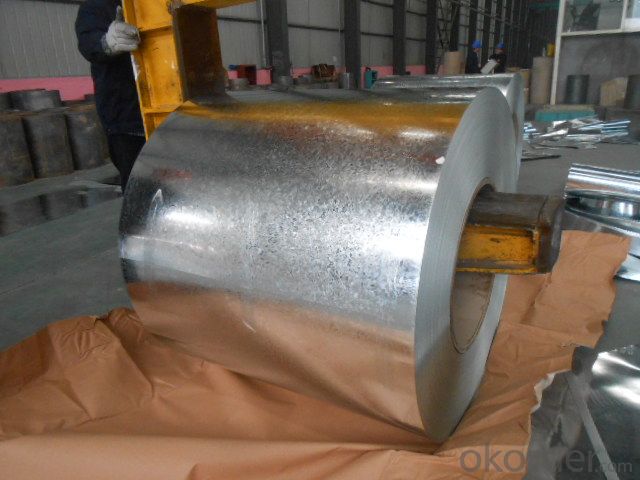
4.Hot-Dip Galvanized Steel Sheet Specification
Standard: ASTM, JIS,EN
Grade: CS, DX51D+Z,SGCC, SS 230~550,S220GD+Z~S550GD+Z, SGC340~SGC570
Thickness: 0.1mm~5mm
Width: max 2000mm
Coil weight:3-12 MT
Coil ID:508/610mm
Surface structure: zero spangle, regular spangle or minimum spangle
Surface treatment: Chromate treatment, Oiled/dry, skinpassed/non-skinpassed
Packing: Standard seaworthy export package
Technology test results:
Processability | Yield strength | Tensile strength | Elongation % | 180°cold-bending |
Common PV | - | 270-500 | - | d=0,intact,no zinc removal |
Mechanical interlocking JY | - | 270-500 | - | d=0,intact,no zinc removal |
Structure JG | >=240 | >=370 | >=18 | d=0,intact,no zinc removal |
Deep drawn SC | - | 270-380 | >=30 | d=0,intact,no zinc removal |
EDDQ SC | - | 270-380 | >=30 | d=0,intact,no zinc removal |
5.FAQ of Hot-Dip Galvanized Steel Sheet
We have organized several common questions for our clients,may help you sincerely:
1.How about your company?
A world class manufacturer & supplier of castings forging in carbon steel and alloy steel,is one of the large-scale professional investment casting production bases in China,consisting of both casting foundry forging and machining factory. Annually more than 8000 tons Precision casting and forging parts are exported to markets in Europe,America and Japan. OEM casting and forging service available according to customer’s requirements.
2.How to guarantee the quality of the products?
We have established the international advanced quality management system,every link from raw material to final product we have strict quality test;We resolutely put an end to unqualified products flowing into the market. At the same time, we will provide necessary follow-up service assurance.
3. How long can we receive the product after purchase?
Usually within thirty working days after receiving buyer’s advance payment or LC. We will arrange the factory manufacturing as soon as possible. The cargo readiness usually takes 15-30 days, but the shipment will depend on the vessel situation.
- Q: How are steel coils used in the production of metal fixtures?
- The production of metal fixtures relies heavily on steel coils, an indispensable element. Typically composed of carbon steel, these coils act as the primary raw material for manufacturing a diverse array of metal fixtures. To begin the process, the steel coils are initially uncoiled and subsequently cut into sheets of the desired size and thickness. These sheets serve as the fundamental material for various types of metal fixtures, including brackets, hinges, handles, and other structural components. Once the sheets have been cut, they undergo a series of shaping procedures, such as bending, stamping, or rolling. These procedures are crucial in molding the steel sheets into the specific design required for each metal fixture. For instance, bending can be utilized to create brackets or angles, while stamping can form intricate patterns or shapes. Following the shaping procedures, it is common for the steel sheets to undergo welding or joining techniques, which are employed to assemble multiple components of the metal fixture. Through welding, the various parts are securely attached, ensuring strength and durability in the final product. Moreover, steel coils also play a vital role in enhancing the appearance and extending the lifespan of metal fixtures. They can be coated or treated with protective layers, such as galvanized or powder coatings, to prevent corrosion and provide a polished finish. These coatings guarantee that the metal fixtures can withstand environmental factors and prolong their durability. To summarize, steel coils are an indispensable component in the production process of metal fixtures. They are transformed into sheets, which are then shaped, joined, and coated to create a wide range of functional and aesthetically pleasing metal fixtures utilized across various industries.
- Q: Can cold rolled galvanized steel coils be acid washed after oxidation?
- If it has been galvanized, it can not be pickled, and if it is pickled, it may corrode the zinc layer
- Q: How do steel coils contribute to the HVACR equipment industry?
- Steel coils play a crucial role in the HVACR (Heating, Ventilation, Air Conditioning, and Refrigeration) equipment industry by providing efficient heat transfer and ensuring the effective functioning of various HVACR systems. These coils are typically made of high-quality steel and are an integral component of equipment such as air conditioners, heat pumps, refrigerators, and boilers. One of the primary functions of steel coils in HVACR equipment is to facilitate heat transfer. These coils are designed to efficiently transfer heat between the refrigerant and the surrounding air or water, depending on the specific system. By utilizing steel coils with a large surface area and good thermal conductivity, HVACR equipment can effectively cool or heat a given space. This ensures optimal energy efficiency and reduces operating costs for both residential and commercial applications. In addition to heat transfer, steel coils also contribute to the overall durability and longevity of HVACR equipment. The steel used in these coils is typically corrosion-resistant, which helps prevent damage from moisture or other environmental factors. This reliability is essential in HVACR systems, as they are often subjected to harsh conditions and must operate continuously to maintain comfortable indoor environments. Moreover, steel coils are versatile and can be customized to meet the specific requirements of different HVACR applications. Manufacturers can vary the size, shape, and configuration of the coils to fit the available space and optimize performance. This flexibility allows for the efficient integration of steel coils into various HVACR equipment, ensuring they meet the specific heating and cooling needs of different environments. Overall, steel coils are indispensable in the HVACR equipment industry. They enable efficient heat transfer, enhance durability, and offer customization options, thereby ensuring the effective functioning and energy efficiency of HVACR systems. By incorporating high-quality steel coils into their products, manufacturers can provide reliable and long-lasting solutions for heating, ventilation, air conditioning, and refrigeration needs in both residential and commercial settings.
- Q: How are steel coils processed for slitting or shearing?
- Steel coils are processed for slitting or shearing by feeding the coil through a slitter or shear machine, which cuts the coil into narrower strips or various shapes, respectively. This process involves unwinding the coil, straightening it, and then passing it through the slitting or shearing machine, where precise cuts are made according to the desired dimensions. The resulting strips or shapes are then collected and packaged for further use or distribution.
- Q: How are steel coils used in the manufacturing of construction excavators?
- Steel coils are used in the manufacturing of construction excavators as they are often the primary material for constructing the structural components of the excavator. These coils are typically processed and shaped into various parts, such as the chassis, boom, arm, and bucket, providing the necessary strength and durability required for heavy-duty construction work.
- Q: How are steel coils used in the manufacturing of agricultural irrigation systems?
- Steel coils are used in the manufacturing of agricultural irrigation systems primarily for the fabrication of pipes and tubing. These coils are formed into the desired shape and size, allowing for efficient water transportation and distribution throughout the agricultural fields.
- Q: How are steel coils stored and transported?
- Steel coils are typically stored in warehouses or outdoor storage yards. They are usually stacked horizontally, one on top of the other, with wooden or steel supports placed between each coil to prevent damage. When it comes to transportation, steel coils are usually loaded onto flatbed trucks or shipping containers using cranes or forklifts. It is important to secure the coils properly during transportation to prevent any shifting or damage.
- Q: i want to know if i should buy a set of acrylic tapers or steel. they r close in cost so it's not a money factor i want to know which work better and if there is a downside to either. thanks!
- It relies upon on your physique and what you desire. in case you physique is allergic to a minimum of one in all them you may would desire to chosen for yet another one. If this is not any longer allergic to any, than you need to use in spite of you like the main, in simple terms attempt the two.
- Q: Can steel coils be coated with aluminum?
- Yes, steel coils can be coated with aluminum. This process is commonly known as the coil coating or the prepainting process, where a layer of aluminum is applied onto the steel coils to enhance their corrosion resistance and improve their aesthetic appearance.
- Q: Are they made using the same processes, or is tempered steel made without the quenching process?
- Hardening is the preliminary process. The fully hardened state may be far too brittle for practical use. The tempering process is tailored to reduce the actual hardness, to introduce more flexible alloys. The tempering method employed may be done at relatively low temperatures, but some alloys require prolonged soaking at elevated temperatures. Some may be cooled in air, but others may require quenching to end the process.
Send your message to us
Hot-dip Zinc Coating Steel Sheets in Coils of Prime Quality and Best Price
- Loading Port:
- Shanghai
- Payment Terms:
- TT OR LC
- Min Order Qty:
- 50 m.t.
- Supply Capability:
- 10000 m.t./month
OKorder Service Pledge
OKorder Financial Service
Similar products
Hot products
Hot Searches
Related keywords
